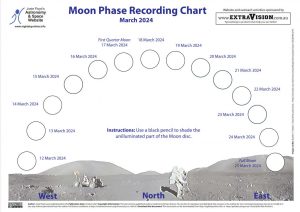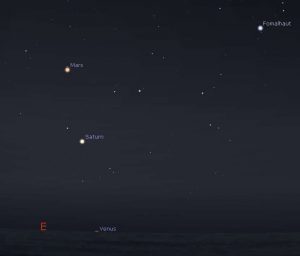Use the finder charts on this page to guide you to where to look for the planets in March 2024.
Don’t have a telescope to look at the planets or Moon? Remember you can contact your local astronomical society about holding a telescope viewing session for your school, youth group or other organisation.
A few pointers:
- All planets visible to the unaided eye look like stars. Planets visible to the unaided eye include Mercury, Venus, Earth (look down!), Mars, Jupiter and Saturn.
- Planet visibility in 2024
- TimeandDate.com will generate customised visiblity information for your location. Just make sure you specify where you are.
- You can download planet rise and set times for different Australian capital cities from Quasar Publishing’s site.
- In a telescope, Uranus and Neptune are visible as tiny discs. The minor planet Pluto remains looking like a star in even the largest amateur telescope.
- Stars are shown to magnitude 5 on the charts unless otherwise noted. This is a compromise between what you would see from the light polluted skies of a city (where you will see significantly less stars) and dark country skies (where you will see significantly more stars).
- Unless otherwise noted, the finder charts are prepared for Wollongong, NSW. The charts will be useful for elsewhere in Eastern Australia including Canberra.
- Planet finder charts usually focus on when the Moon is next to a particular planet. That lets beginning astronomers use the Moon as a ‘signpost’ to find that particular planet.
9 March 2024 – Moon, Venus and Mars – Morning twilight sky
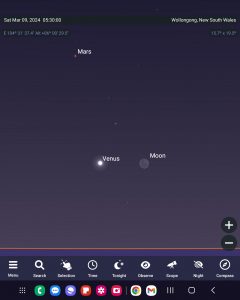
12 to 25 March 2024 – Record the changing appearance of the Moon – Evening twilight sky
An easy but rewarding observing activity is to record the changing appearance of the Moon between New Moon and Full Moon. If you observe it at the same time each evening (end of evening twilight), you will notice that the Moon moves from the West to the East. This movement demonstrates the Moon’s movement in it’s orbit around the Earth. Download the recording chart.
14 March 2024 – Moon and Jupiter – Early evening sky
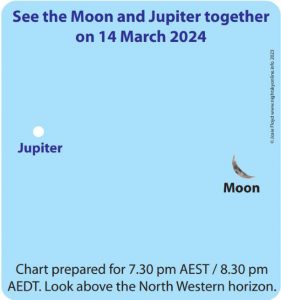
15 March 2024 – All Sky Chart – Pre-dawn sky
Use the below chart to explore the morning pre-dawn sky.
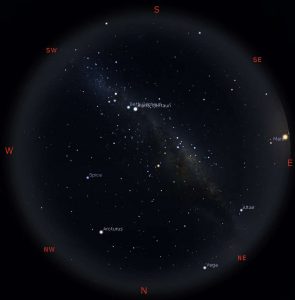
15 to 19 March – International Space Station visible – Morning twilight sky
The International Space Station is visible to the unaided eye in the mid-month March 2024 mornings skies. Exact times and dates will vary for your location across Eastern Australia. More information and links to finder charts can be found here.
16 March 2024 – Look for the Apollo landing site regions – Evening sky
Location charts for the Apollo 11 and 17 landing site regions can be found elsewhere on this site. A telescope will be required.
25 March 2024 – Penumbral Lunar Eclipse
The first of 2024’s lunar eclipses is a penumbral (25 March 2024) eclipse and will not be visible. This is firstly due to the eclipse starting as the Moon is below the horizon and then being low on the horizon during evening twilight. The Moon only goes through the faintest outer part of the Earth’s shadow meaning that such eclipses are often difficult to see under ideal circumstances. More about 2024’s lunar and solar eclipses can be found elsewhere on this site.
